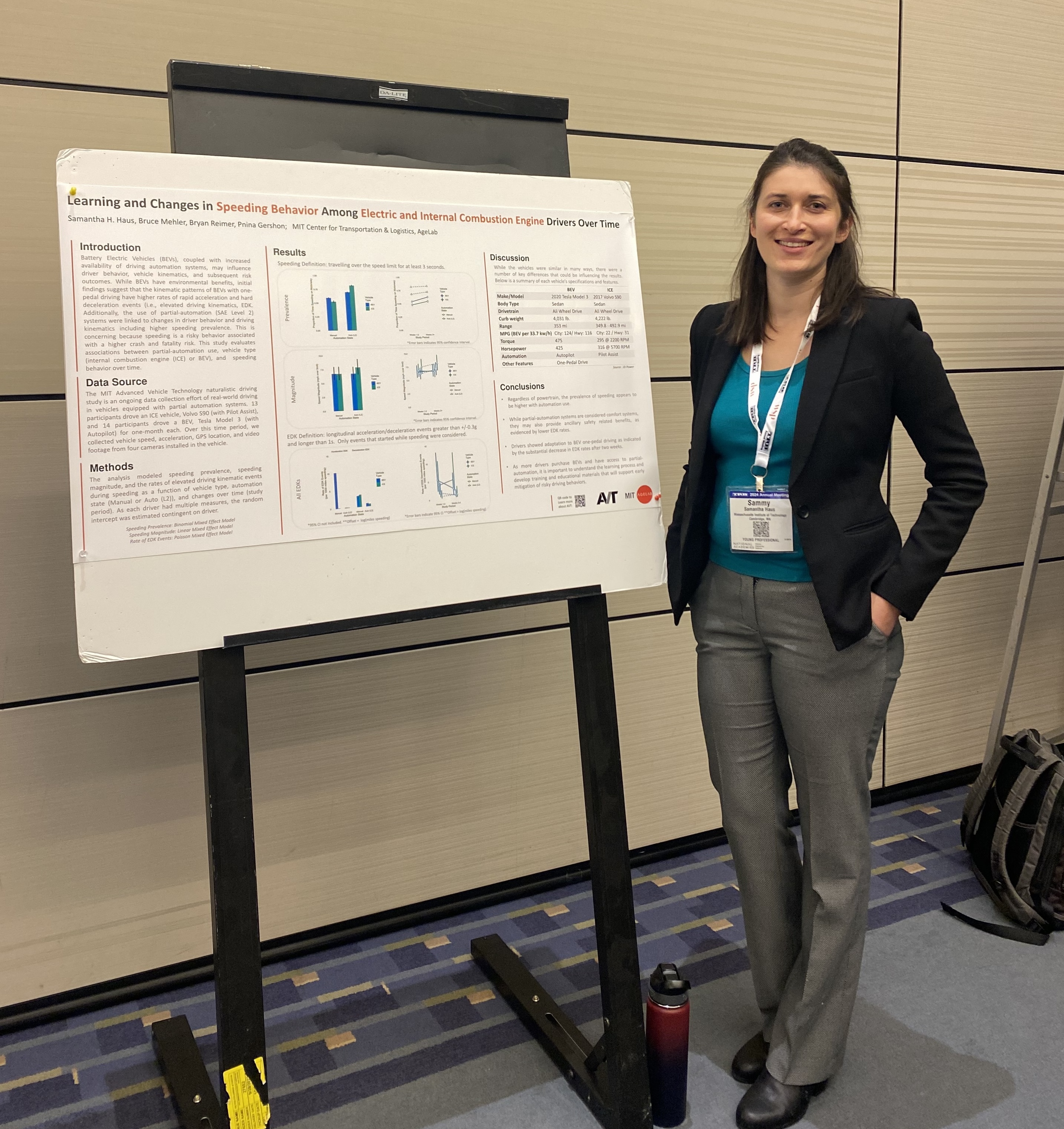Samantha Haus Presents at TRB on Effects of Electric Cars, Assistance Systems on Driving Behavior
by Adam Felts
AgeLab postdoctoral associate Samantha Haus presented research on advanced vehicle technologies at the 2024 Transportation Research Board Meeting.
The introduction of Battery Electric Vehicles (BEVs), coupled with increased availability of driving automation systems, may influence driver behavior, vehicle kinematics, and subsequent risk outcomes. Electric vehicles show higher incidences of rapid acceleration and hard deceleration events. Partial automation also results in changes in driver behavior.
Dr. Haus sought to measure how these aspects of the vehicle might contribute to speeding behavior among drivers. Using participants in the AgeLab’s ongoing AVT research, she tracked driver behavior in a Tesla Model 3 (an electric vehicle) and a Volvo S3 (a vehicle with an internal combustion engine). Both cars were equipped with driver assistance technologies.
Results from the study indicated that the use of driver assistance systems is related to increased rates of speeding among drivers, but also may result in safer driving, as indicated by less sudden acceleration and deceleration events. Drivers of electric vehicles were also more likely to speed and to exhibit a greater tendency toward sudden speed changes, but over time, these differences decreased, likely because the drivers became more accustomed to operating the unfamiliar vehicle.
Former AgeLab visiting student Evelyn Schneider also presented a paper, co-authored with Chaiwoo Lee, Lisa D'Ambrosio, and Joseph Coughlin, on AgeLab research that examined the impacts of driving a car outfitted with various advanced vehicle technologies (AVT) and individual risk attitudes on reported distracted driving behaviors (DDB). Drawing on national self-reported survey data from late 2019, the authors found that the presence of AVT and individual risk attitudes each predicted DDB. Convenience features such as Wi-Fi and Bluetooth in the vehicle were most likely to increase DDB, whereas driver-assist and safety features led to some degree of decreased DDB. The results point to the need to design AVT systems to minimize distracted driving while leveraging the benefits of technology around safety.

